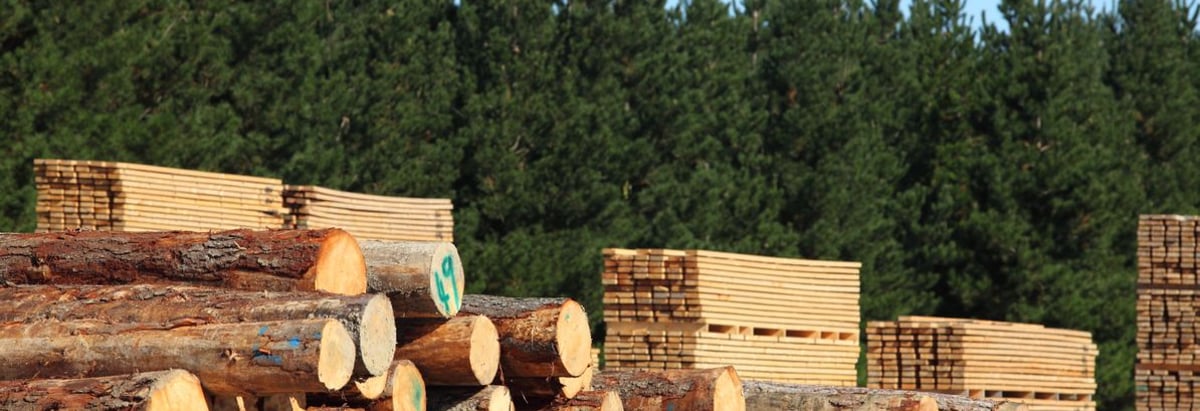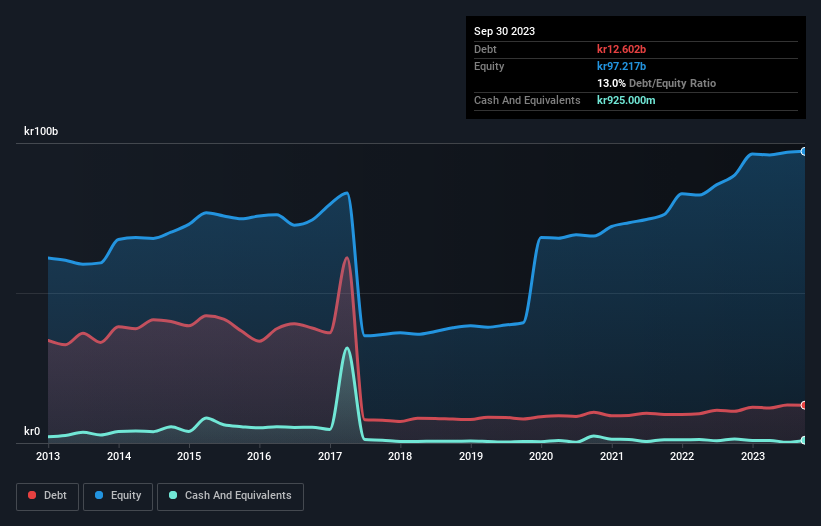- Sweden
- /
- Paper and Forestry Products
- /
- OM:SCA B
Svenska Cellulosa Aktiebolaget (STO:SCA B) Takes On Some Risk With Its Use Of Debt

David Iben put it well when he said, 'Volatility is not a risk we care about. What we care about is avoiding the permanent loss of capital.' When we think about how risky a company is, we always like to look at its use of debt, since debt overload can lead to ruin. As with many other companies Svenska Cellulosa Aktiebolaget SCA (publ) (STO:SCA B) makes use of debt. But the real question is whether this debt is making the company risky.
What Risk Does Debt Bring?
Debt is a tool to help businesses grow, but if a business is incapable of paying off its lenders, then it exists at their mercy. Part and parcel of capitalism is the process of 'creative destruction' where failed businesses are mercilessly liquidated by their bankers. However, a more frequent (but still costly) occurrence is where a company must issue shares at bargain-basement prices, permanently diluting shareholders, just to shore up its balance sheet. By replacing dilution, though, debt can be an extremely good tool for businesses that need capital to invest in growth at high rates of return. The first thing to do when considering how much debt a business uses is to look at its cash and debt together.
Check out our latest analysis for Svenska Cellulosa Aktiebolaget
How Much Debt Does Svenska Cellulosa Aktiebolaget Carry?
As you can see below, at the end of September 2023, Svenska Cellulosa Aktiebolaget had kr12.6b of debt, up from kr10.6b a year ago. Click the image for more detail. However, it does have kr925.0m in cash offsetting this, leading to net debt of about kr11.7b.

How Healthy Is Svenska Cellulosa Aktiebolaget's Balance Sheet?
The latest balance sheet data shows that Svenska Cellulosa Aktiebolaget had liabilities of kr6.79b due within a year, and liabilities of kr34.5b falling due after that. Offsetting this, it had kr925.0m in cash and kr3.37b in receivables that were due within 12 months. So it has liabilities totalling kr37.0b more than its cash and near-term receivables, combined.
Svenska Cellulosa Aktiebolaget has a very large market capitalization of kr111.2b, so it could very likely raise cash to ameliorate its balance sheet, if the need arose. However, it is still worthwhile taking a close look at its ability to pay off debt.
In order to size up a company's debt relative to its earnings, we calculate its net debt divided by its earnings before interest, tax, depreciation, and amortization (EBITDA) and its earnings before interest and tax (EBIT) divided by its interest expense (its interest cover). Thus we consider debt relative to earnings both with and without depreciation and amortization expenses.
We'd say that Svenska Cellulosa Aktiebolaget's moderate net debt to EBITDA ratio ( being 2.3), indicates prudence when it comes to debt. And its strong interest cover of 11.4 times, makes us even more comfortable. Shareholders should be aware that Svenska Cellulosa Aktiebolaget's EBIT was down 53% last year. If that earnings trend continues then paying off its debt will be about as easy as herding cats on to a roller coaster. When analysing debt levels, the balance sheet is the obvious place to start. But it is future earnings, more than anything, that will determine Svenska Cellulosa Aktiebolaget's ability to maintain a healthy balance sheet going forward. So if you want to see what the professionals think, you might find this free report on analyst profit forecasts to be interesting.
Finally, a business needs free cash flow to pay off debt; accounting profits just don't cut it. So we always check how much of that EBIT is translated into free cash flow. In the last three years, Svenska Cellulosa Aktiebolaget's free cash flow amounted to 20% of its EBIT, less than we'd expect. That's not great, when it comes to paying down debt.
Our View
We'd go so far as to say Svenska Cellulosa Aktiebolaget's EBIT growth rate was disappointing. But on the bright side, its interest cover is a good sign, and makes us more optimistic. Looking at the balance sheet and taking into account all these factors, we do believe that debt is making Svenska Cellulosa Aktiebolaget stock a bit risky. That's not necessarily a bad thing, but we'd generally feel more comfortable with less leverage. There's no doubt that we learn most about debt from the balance sheet. However, not all investment risk resides within the balance sheet - far from it. For instance, we've identified 2 warning signs for Svenska Cellulosa Aktiebolaget that you should be aware of.
If you're interested in investing in businesses that can grow profits without the burden of debt, then check out this free list of growing businesses that have net cash on the balance sheet.
New: Manage All Your Stock Portfolios in One Place
We've created the ultimate portfolio companion for stock investors, and it's free.
• Connect an unlimited number of Portfolios and see your total in one currency
• Be alerted to new Warning Signs or Risks via email or mobile
• Track the Fair Value of your stocks
Have feedback on this article? Concerned about the content? Get in touch with us directly. Alternatively, email editorial-team (at) simplywallst.com.
This article by Simply Wall St is general in nature. We provide commentary based on historical data and analyst forecasts only using an unbiased methodology and our articles are not intended to be financial advice. It does not constitute a recommendation to buy or sell any stock, and does not take account of your objectives, or your financial situation. We aim to bring you long-term focused analysis driven by fundamental data. Note that our analysis may not factor in the latest price-sensitive company announcements or qualitative material. Simply Wall St has no position in any stocks mentioned.
About OM:SCA B
Svenska Cellulosa Aktiebolaget
A forest products company, develops, manufactures, and sells forest, wood, pulp, and containerboard products in Sweden, the United States, Germany, the United Kingdom, rest of Europe, Asia, and internationally.
Adequate balance sheet with questionable track record.
Similar Companies
Market Insights
Community Narratives



